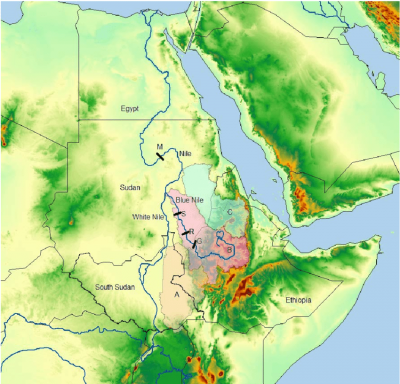
|
The Nile in Africa is the longest river in the world. The river has three tributaries; the two main ones are the White Nile that begins in Burundi and the Blue Nile that has its source in Ethiopia. Both rivers merge in Sudan. The third tributary, Atbara River, is dry most of the year and flows only if it rains in Ethiopia. |
The Nile River, considered the longest river in the world, is approximately 4,258 miles (6,853 kilometers) long, but its exact length is a matter of debate. Flowing northward through the tropical climate of eastern Africa and into the Mediterranean Sea, the river passes through 11 countries: Tanzania, Uganda, Rwanda, Burundi, the Democratic Republic of the Congo, Kenya, Ethiopia, Eritrea, South Sudan, Sudan and Egypt.
The Nile has two major tributaries: the longer White Nile, considered the prime stream and headwaters; and the Blue Nile, which carries about two-thirds of the river’s water volume and most of the silt.
The White Nile begins at Lake Victoria, Africa’s largest lake, which touches the countries of Uganda, Kenya and Tanzania. But Lake Victoria isn’t necessarily the most distant and “true” source of the Nile River because the lake itself has many feeder rivers coming in from the surrounding mountains. In 2006, a British explorer named Neil McGrigor said he’d traveled to the Nile’s most distant source at the beginning of the Kagera River, Lake Victoria’s longest feeder river.
Credit: Live Science
Picture Credit : Google




